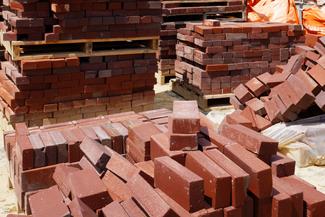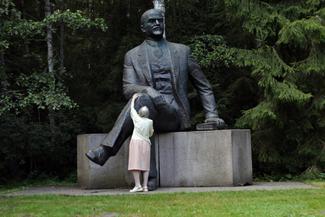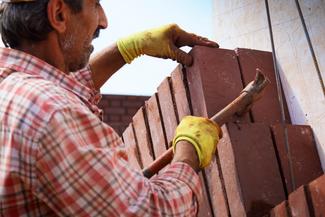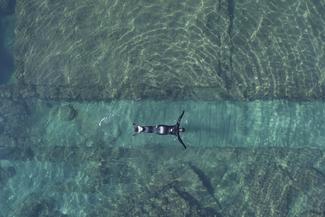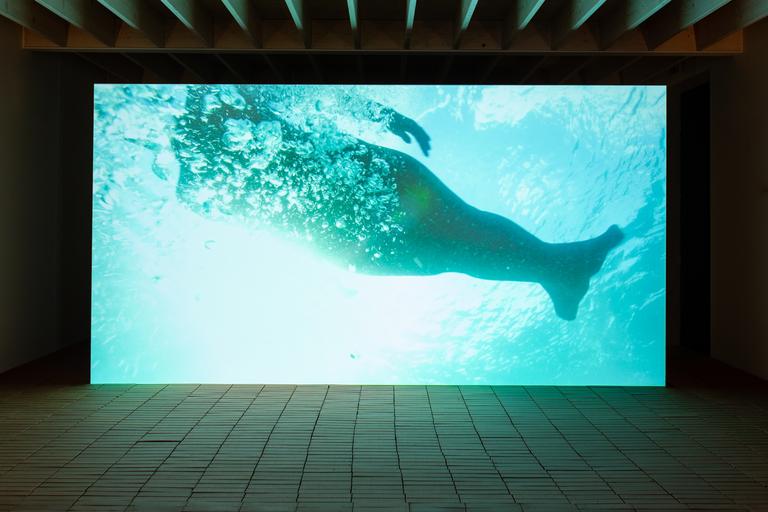
Warché : Lina Ghotmeh, Emilija Škarnulytė et Sara Ouhaddou Lina Ghotmeh, Emilija Škarnulytė et Sara Ouhaddou
La Fondation Thalie promeut des pratiques artistiques pluridisciplinaires, notamment le dialogue entre les arts visuels et les savoir-faire. Dans le cadre de cette nouvelle exposition, elle invite à travers l’architecture et les arts visuels à questionner notre rapport au temps comme témoin de notre passage sur terre.
L’exposition Warché, « chantier » en arabe, s’articule autour de l’histoire personnelle de Lina Ghotmeh, architecte originaire de Beyrouth qui se définit comme archéologue du futur « puisant dans le passé pour écrire l’avenir ». Deux artistes contemporaines accompagnent sa recherche dans cette exposition collective : Emilija Škarnulytė qui travaille sur la perception du temps géologique et son influence sur l’Histoire, notamment l’inscription dans la terre des grands conflits, elle-même confrontée aux explorations de Sara Ouhaddou sur l’histoire des constructions et des pertes d’identités architecturales.
Lina Ghotmeh a conçu son métier d’architecte en relation avec la ville de Beyrouth : « Après la guerre, il y a eu une intense période de reconstruction. La ville a été éventrée et déconstruite pour se reconstruire. Elle est devenue comme un terrain à ciel ouvert, un champ complètement vierge, et en même temps, toute son histoire émergeait : la ville des Phéniciens, la civilisation gréco-romaine, etc. Elle a été détruite et reconstruite sept fois… J’étais simplement attirée par la matière, le sol, par l’histoire du terrain. J’ai commencé à penser l’architecture comme un rapport permanent à l’histoire, aux vestiges du passé et au sous-sol. »
Pour la Fondation, l’architecte investit le sol de l’espace de l’atelier avec un tapis de briques issues de productions locales, une démonstration de son engagement pour ce matériau bio-sourcé et pour l’architecture de terre, tradition qui date de plusieurs millénaires, notamment dans les pays du Proche-Orient et du bassin méditerranéen.
À ses côtés, l’artiste lituanienne Emilija Škarnulytė apparaît comme une intermédiaire entre la nature et la technologie, entre des créatures humanoïdes ou non. Le paysage vidéo et sonore immersif « Sunken Cities » confronte des structures désaffectées enveloppées de mythes, marquées par la décadence, notamment ici avec une figure de sirène jouant un rôle de contre-mythe. Son œuvre donne l’impression d’explorer ces villes englouties avec une vision rétro-futuriste de notre planète, perspective d’un autre temps, dans laquelle la race humaine aurait disparu et la nature reprit le dessus. Ou comme l’exprime Škarnulytė : « Les ruines de l’activité humaine sont vues depuis un futur lointain. »
Enfin, l’artiste Sara Ouhaddou, française d’origine marocaine, récupère des plans de dessins de géométrie islamique et les déconstruit afin de créer de nouvelles formes : un alphabet géométrique. Dans ce processus, elle s’inspire d’architectures, de l’écriture arabe ou de symboles berbères issus de l’artisanat et crée des aquarelles, des morceaux de ciel. L’archéologie est ici prise dans les lignes d’une ambivalence disparition/apparition, exaltant l’émergence d’une trace, réelle ou fictive.
L’exposition Warché questionne ainsi ces témoins que la terre fait de nous et la responsabilité de nos interprétations, tant politiques que poétiques. Elle prend sa source dans l’histoire de Beyrouth, la cité romaine engloutie Baiae et les architectures géométriques arabes où nous devenons simultanément les témoins d’un monde futur, contemporain et passé.
Commissariat : Anissa Touati
~ 𝐄𝐍 ~
The Fondation Thalie highlights multidisciplanry artistic practices, with an emphasis on the dialogue between visual arts and craftsmanship. For the upcoming exhibit, the foundation looks to question our relationship with time as a witness to our moments spent on earth through architecture and visual arts.
Titled Warché, meaning worksite in Arabic, the exhibit is based on the personal history of Lina Ghotmeh, a Beyrouth native architect who defines herself as a new kind of archaeologist, searching in our past to write our future. As a group show, two contemporary artists will show work alongside Ghotmeh: Emilija Škarnulytė whose work is about the perception of geological time and its influence on history, especially through the marking of the biggest human conflicts in earth, and the work of Sara Ouhaddou about the history of construction and the loss of architectural identities.
Lina Ghotmeh built her architecture career in relation to Beyrouth, “After the war, there was an intense period of reconstruction. The city was fanned and destroyed and then rebuilt. It became like an open sky terrain, a bare field and yet at the same time all of its history was emerging; the Phoenician city, the Greco-Roman civilization, etc. The city was destroyed and rebuilt seven times… I was simply attracted to the material, the ground, and the history of the terrain. I began to think about architecture as a permanent relationship to history and to the remains of the past and of the subsoil.”
For the Fondation Thalie, the architect is taking over the floor of the exhibition space with locally sourced bricks, demonstrating her commitment to this bio sourced material and to earthen architecture, an ancient tradition notably in near Middle Eastern countries and the Mediterranean regions.
The Lithuanian artist, Emilija Škarnulytė, appears alongside as an intermediary between nature and technology or between humanoid creators or not. The immersive sound and video landscape « Sunken Cities » confronts abandoned buildings wrapped up in myths and marked by decadence with a mermaid figure playing the role of confronting myth. Her work gives off an impression explorating sunken cities with a retro-futuristic view of our planet, a perspective of a time not yet passed, in which the human race has perhaps disappeared and where nature has taken over. Škarnulyté explains: “The ruins of human activity seen from a distant future.”
Finally, Sara Ouhaddou, the French artist with Moroccan roots, recovers drawn plans of Islamic geometry and deconstructs them in order to create new shapes, a geometrical alphabet. In this process, she is inspired by architecture, written Arabic, or Berber symbols created by craftsmanship and creates pieces of the sky with watercolours. Archaeology is found here through the ambivalence of disappearance/appearance exalting the emergence of a trace, either fake or real.
The Warché exhibit questions both the witnessing of us by the earth and the responsibility of our interpretations, whether political or poetic. It is created through the history of Beyrouth, the sunken Roman city of Baiae, and Arabic geometrical architectures and places us where we become witnesses to a world that is in the future, present, and the past.
Curating: Anissa Touati
